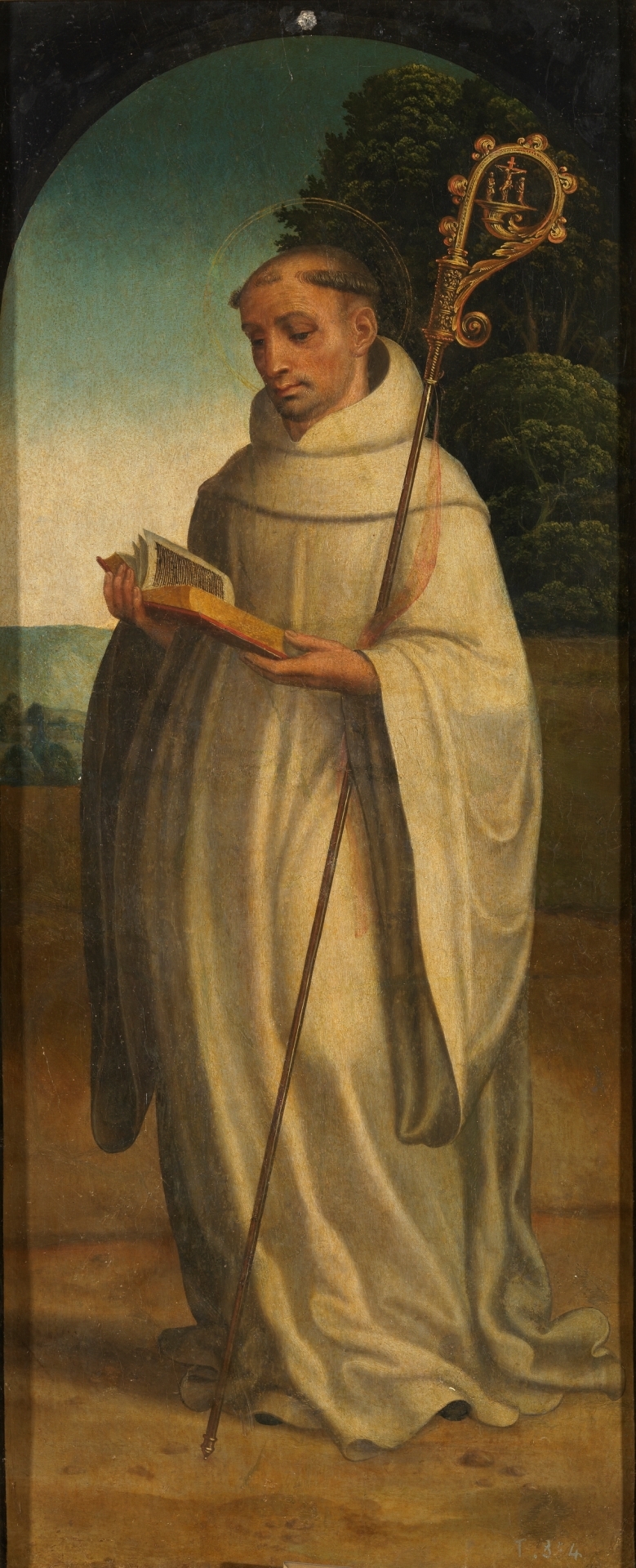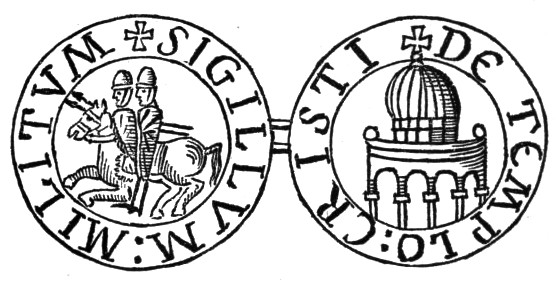Council Of Troyes 1129 on:
[Wikipedia]
[Google]
[Amazon]
The Council of Troyes was convened by
 Founded by Hugues de Payens in 1119, the Knights Templar had gained the backing of King Baldwin II at the
Founded by Hugues de Payens in 1119, the Knights Templar had gained the backing of King Baldwin II at the 

Bernard of Clairvaux
Bernard of Clairvaux, O. Cist. ( la, Bernardus Claraevallensis; 109020 August 1153), venerated as Saint Bernard, was an abbot, mystic, co-founder of the Knights Templars, and a major leader in the reformation of the Benedictine Order through ...
on 13 January 1129 in the city of Troyes
Troyes () is a commune and the capital of the department of Aube in the Grand Est region of north-central France. It is located on the Seine river about south-east of Paris. Troyes is situated within the Champagne wine region and is near to ...
. The council, largely attended by French clerics, was assembled to hear a petition by Hugues de Payens
Hugues de Payens or Payns (9 February 1070 – 24 May 1136) was the co-founder and first Grand Master of the Knights Templar. In association with Bernard of Clairvaux, he created the ''Latin Rule'', the code of behavior for the Order.
Name
T ...
, head of the Knights Templar
, colors = White mantle with a red cross
, colors_label = Attire
, march =
, mascot = Two knights riding a single horse
, equipment ...
. Pope Honorius II
Pope Honorius II (9 February 1060 – 13 February 1130), born Lamberto Scannabecchi,Levillain, pg. 731 was head of the Catholic Church and ruler of the Papal States from 21 December 1124 to his death in 1130.
Although from a humble background, ...
did not attend the council, sending the papal legate, Matthew, cardinal-bishop of Albano. The council addressed issues concerning the Templar Order and a dispute between the bishop of Paris and king of France.
Background
 Founded by Hugues de Payens in 1119, the Knights Templar had gained the backing of King Baldwin II at the
Founded by Hugues de Payens in 1119, the Knights Templar had gained the backing of King Baldwin II at the Council of Nablus
The Council of Nablus was a council of ecclesiastic and secular lords in the crusader Kingdom of Jerusalem, held on January 16, 1120.
History
The council was convened at Nablus by Warmund, Patriarch of Jerusalem, and King Baldwin II of Jerusalem. ...
in 16 January 1120. In 1126, Baldwin had commissioned two clerics to speak with Bernard of Clairvaux seeking papal recognition and a Rule for the Templar Order. Later, Baldwin sent Hugues to Europe to convince Fulk of Anjou to marry his daughter Melisende and to raise an army for a crusade against Damascus. Hugues's other objectives were to gain papal recognition, recruit members for the Order, and establish a permanent Templar base in Europe. According to William of Tyre
William of Tyre ( la, Willelmus Tyrensis; 113029 September 1186) was a medieval prelate and chronicler. As archbishop of Tyre, he is sometimes known as William II to distinguish him from his predecessor, William I, the Englishman, a former ...
, at the time of the council of Troyes the Order had only 9 members.

Council
Bernard convened the council on 13 January 1129. The attendees, which were mainly French clerics, consisted of the archbishops Renaud of Reims and Henry of Sens, ten bishops, four Cistercian abbots, a number of other abbots, and the clerical scholars, Alberic of Reims and Fulger. Pope Honorius was not in attendance at the council, instead sending his papal legate, Matthew, cardinal-bishop of Albano.Templar Order
The head of the Order, Hugues de Payen, petitioned the council for a ''Rule'' for the Templars. The council passed, with considerable influence from Bernard, the Templar rule, similar to that ofRule of Saint Benedict
The ''Rule of Saint Benedict'' ( la, Regula Sancti Benedicti) is a book of precepts written in Latin in 516 by St Benedict of Nursia ( AD 480–550) for monks living communally under the authority of an abbot.
The spirit of Saint Benedict's Ru ...
. The Templar Rule consolidated the monastic tenets of poverty, chastity, obedience and added a vow to defend the Holy Land. The Rule was originally written in Latin, but was translated into French sometime after the Council of Pisa
The Council of Pisa was a controversial ecumenical council of the Catholic Church held in 1409. It attempted to end the Western Schism by deposing Benedict XIII (Avignon) and Gregory XII (Rome) for schism and manifest heresy. The College of C ...
in 1135. Due to a petition by Pope Honorius II and Patriarch Stephen of Jerusalem, the Templars were required wear a white habit.

Disputes
The Council addressed disputes concerning Bishop Stephen of Paris and King Louis VI of France.Aftermath
Following the Council of Troyes' decision concerning the Templar Order, the Templars gained popularity throughout France, Portugal, Spain, and Provence. The influx of gold, silver, grants of properties, and men, allowed Hugues de Payens to appoint Payen de Montdidier to oversee France. Even nobility were joining the Order, with Raymond-Berengar III, Count of Barcelona, being accepted as a companion member on 14 July 1130.Notes
References
Sources
* * * * * * * * * * *{{cite book , title=The Rule of the Templars: The French Text of the Rule of the Order of the Knights Templar , editor-first=J.M. , editor-last=Upton-Ward , publisher=The Boydell Press , year=1992 1129 in Europe Knights Templar 12th-century Catholic Church councils